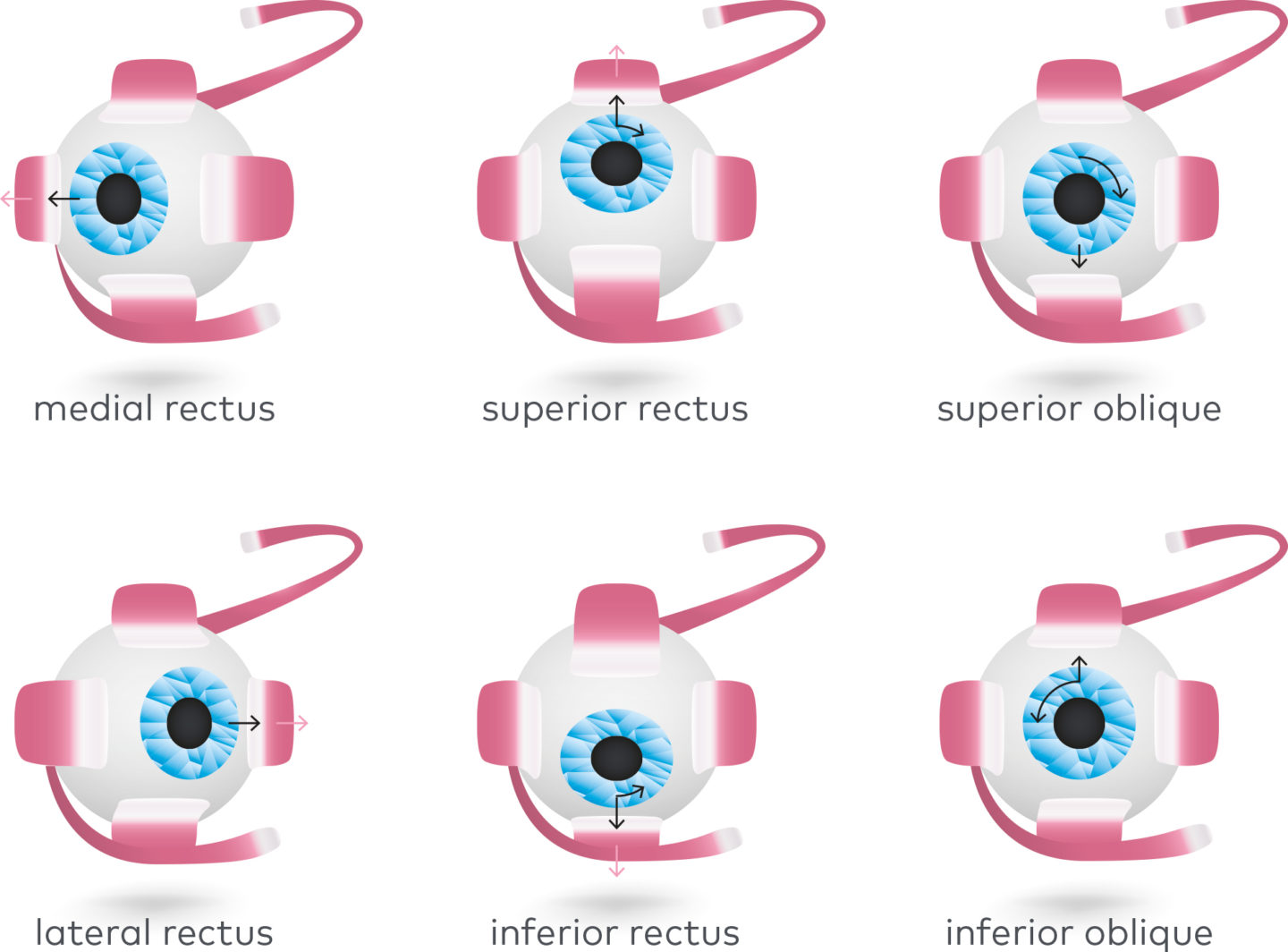Eye Muscle Function
The movement of each eye is controlled by four rectus and two oblique eye muscles
- The lateral rectus muscle moves the eye outwards
- The superior rectus muscle moves the eye upwards and, to a lesser extent, rotates the top of the eye towards the nose
- The superior oblique muscle rotates the top of the eye towards the nose and, to a lesser extent, moves the eye downwards
- The medial rectus muscle moves the eye inwards
- The inferior rectus muscle moves the eye downwards and, to a lesser extent, rotates the top of the eye towards the temple
- The inferior oblique muscle rotates the top of the eye towards the temple and, to a lesser extent, moves the eye upwards

What is strabismus
Strabismus, more commonly known as squint, is a disorder in which the two eyes are not properly aligned with each other.
Therefore, the two squinting eyes are not able to look at the same object at the same time.
The strabismus patient may experience
- double vision
- depth perception loss
- vision loss and
- psychosocial problems
Young strabismus children usually lack double vision, older strabismus children and adults will not experience vision loss.

